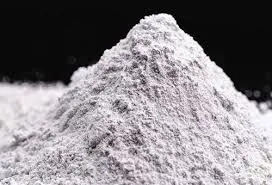
Nov . 25, 2024 21:50 Back to list
what is hpmc made from
What Is HPMC Made From?
Hydroxypropyl Methylcellulose (HPMC) is a cellulose derivative widely used in various industries, including pharmaceuticals, food, and construction. Understanding what HPMC is made from can give us insight into its properties, applications, and benefits.
Structure of HPMC
HPMC is derived from cellulose, which is a natural polymer found in the cell walls of plants. Cellulose consists of long chains of glucose molecules, making it a key structural component of plants. The modification of cellulose to produce HPMC involves several chemical processes where side groups are introduced. Specifically, methyl and hydroxypropyl groups are added to the cellulose chains. This process results in a product that retains the essential characteristics of cellulose but exhibits enhanced solubility, thicker viscosity, and improved stability, which are critical for its functionality in various applications.
Manufacturing Process
The production of HPMC generally involves several key steps. First, natural cellulose is extracted from plant sources, commonly derived from wood pulp or cotton. The cellulose is then treated with alkali, such as sodium hydroxide, to initiate the reaction that leads to the substitution of methoxy and hydroxypropyl groups onto the cellulose molecules.
Once the cellulose has been modified, it undergoes neutralization and is washed to remove residual chemicals. The final product is often dried and milled into a fine powder. This powder form is essential for many applications, allowing for easy mixing and dissolution in various solvents. The ratio of the methyl and hydroxypropyl groups can be adjusted during manufacturing to create different grades of HPMC, each with unique properties suited for specific applications.
Properties of HPMC
HPMC boasts several significant properties that make it valuable across various industries
1. Solubility HPMC can dissolve in hot or cold water, which is not typical for native cellulose. This solubility is crucial in many applications, particularly in pharmaceutical formulations where HPMC serves as a binder, film-former, or controlled-release agent.
2. Thickening Agent When dissolved in water, HPMC forms a viscous solution that can act as a thickening agent in products such as sauces, dressings, and cosmetics. Its ability to increase viscosity without compromising transparency makes it a preferred choice.
what is hpmc made from

3. Film-Forming HPMC can form films that are flexible yet resistant to moisture and oxygen. This property is essential in pharmaceutical coatings and food packaging, allowing for improved shelf life and product integrity.
4. Stability and Compatibility HPMC is chemically stable and compatible with many substances, making it an excellent additive in various formulations. Its non-toxic nature further enhances its appeal in food and pharmaceutical industries.
Applications of HPMC
Given its versatile properties, HPMC finds applications in multiple sectors
- Pharmaceuticals In the pharmaceutical world, HPMC is commonly used as an excipient in tablet formulations, serving as a binder or release control agent. It is also featured in ophthalmic solutions and various drug delivery systems.
- Food Industry HPMC is utilized as a thickener, emulsifier, and stabilizer in the food industry. Its ability to enhance texture and improve moisture retention is invaluable in baked goods, sauces, and dressings.
- Construction In construction, HPMC acts as a water-retaining agent in cement and mortar, improving workability and strength in building materials.
- Cosmetics HPMC is often found in cosmetic formulations due to its thickening and stabilizing properties. It helps improve the texture and application of various products, including shampoos, conditioners, and creams.
Conclusion
Hydroxypropyl Methylcellulose (HPMC) is a remarkable derivative of cellulose with a vast range of applications across various industries. Its production involves careful chemical modification of natural cellulose, resulting in a substance that possesses desirable properties such as solubility, thickening ability, and chemical stability. Whether in pharmaceuticals, food, construction, or cosmetics, HPMC proves to be an indispensable ingredient that enhances product quality and performance. Understanding what HPMC is made from not only highlights its importance but also opens doors to further innovations in its applications.
-
Versatile Hpmc Uses in Different Industries
NewsJun.19,2025
-
Redispersible Powder's Role in Enhancing Durability of Construction Products
NewsJun.19,2025
-
Hydroxyethyl Cellulose Applications Driving Green Industrial Processes
NewsJun.19,2025
-
Exploring Different Redispersible Polymer Powder
NewsJun.19,2025
-
Choosing the Right Mortar Bonding Agent
NewsJun.19,2025
-
Applications and Significance of China Hpmc in Modern Industries
NewsJun.19,2025







